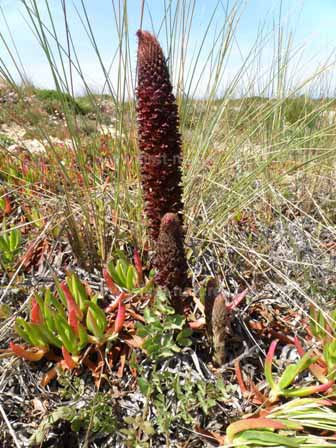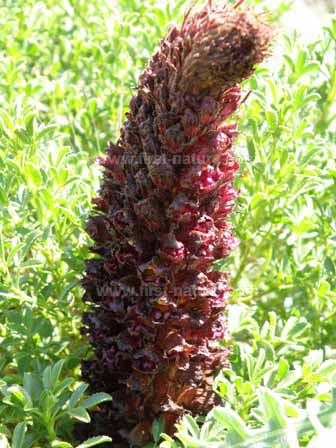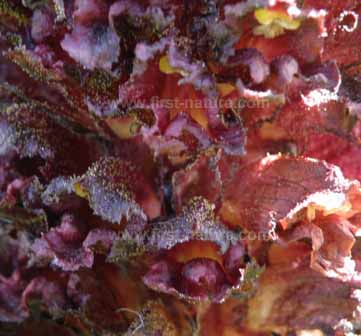Orobanche foetida
Phylum: Magnoliophyta - Class: Equisetopsida - Order: Lamiales - Family: Orobanchaceae

Above: Orobanche foetida - one of the 150 broomrape species that occur mainly in the Mediterranean region
This tall and robust broomrape occurs in the Iberian Peninsula, Tunisia and the Balearic Islands.
A distinctive wildflower, this broomrape is parasitic on various members of the Pea family (Fabaceae). It can grow up to about 50cm in height and has deep red-to-purple flowers that sometimes have purple stigmas and a rather unpleasant smell - hence the specific epithet. This broomrape normally uses wild plants as its host, but it is beginning to become a problem with farm crops in some areas.

Orobanche foetida growing in the dunes close to Cape St. Vincent in the Algarve region of Portugal

A close-up photograph of the flowers of Orobanche foetida
The plants shown on this page were photographed in April in the sand dunes around the Cape St. Vincent area of the Algarve, in Portugal. Orobanche foetida is common in the area, frequently appearing in the fields and abandoned farmland as well as in the dune systems along the coast.
Please Help Us: If you have found this information interesting and useful, please consider helping to keep First Nature online by making a small donation towards the web hosting and internet costs.
Any donations over and above the essential running costs will help support the conservation work of Plantlife, the Rivers Trust and charitable botanic gardens - as do author royalties and publisher proceeds from books by Pat and Sue.



